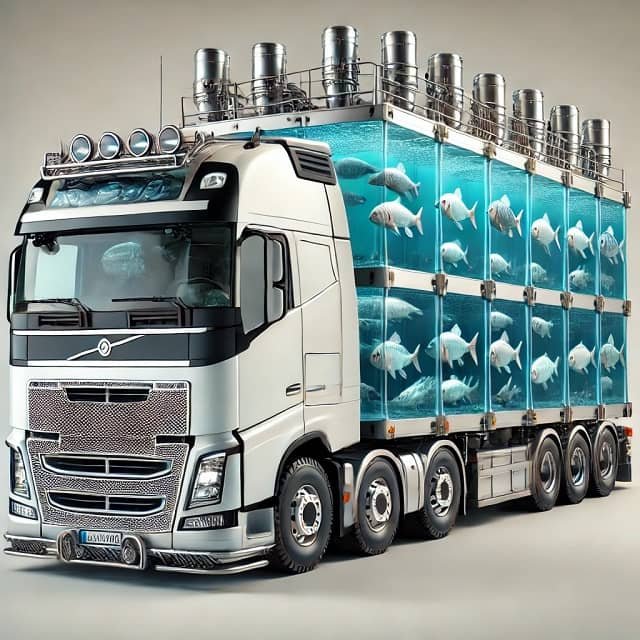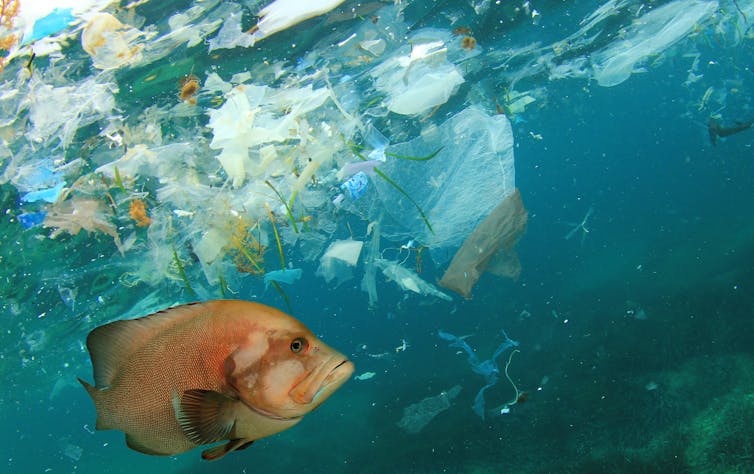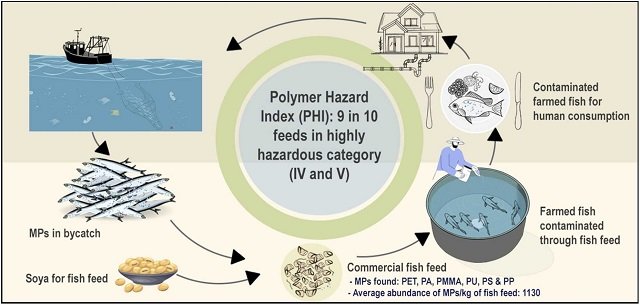Microplastics (plastic particles under 5 mm) are an abundant type of debris found in salt and freshwater environments. In a Limnology & Oceanography Letters study, researchers demonstrated the transfer of microplastics through the food chain between microscopic prey and larval fish that live in coastal ecosystems. They also found that microplastic ingestion interferes with normal growth in fish larvae.
The investigators also looked at the effects of a common pollutant (the pesticide DDT) that attaches to microparticles in coastal waters. Organisms were not able to detect or discriminate against ingesting microparticles with high levels of DDT.
“Our findings indicate that trophic transfer may be an important route for microplastic exposure in estuarine food webs and that even short exposure to high levels of microplastics can impair growth of an important prey fish,” said lead author Samantha Athey, of the University of Toronto. “Because estuaries are incredibly productive habitats that are home to many of our commercial seafood species in the United States, it is important to understand the sources, fate, and effects of microplastics and associated pollutants in these systems.”
Reference (open):
Athey, S.N., Albotra, S.D., Gordon, C.A., Monteleone, B., Seaton, P., Andrady, A.L., Taylor, A.R. and Brander, S.M. (2020), Trophic transfer of microplastics in an estuarine food chain and the effects of a sorbed legacy pollutant. Limnology & Oceanography Letters. doi:10.1002/lol2.10130 https://aslopubs.onlinelibrary.wiley.com/doi/10.1002/lol2.10130
Abstract
Microplastics are of increasing concern as they are readily ingested by aquatic organisms. This study investigated microplastic trophic transfer using larval inland silversides (Menidia beryllina) (5 d posthatch) and unicellular tintinnid (Favella spp.) as a model food chain relevant to North American estuaries. Low-density polyethylene microspheres (10–20?µm) were used to compare direct ingestion of microplastics by larval fish and trophic transfer via tintinnid prey. Dichlorodiphenyltrichloroethane (DDT)-treated microspheres were used to determine sorbed pollutant effects on microplastic ingestion. Larval fish exposed directly to microspheres ingested significantly fewer than those exposed via contaminated prey. Larvae ingested significantly more ciliates containing DDT-treated microspheres than ciliates containing untreated plastics but did not discriminate when exposed directly. Larvae reared for 16?d following a direct 2 h exposure had significantly lower wet weight values than unexposed controls. Our results demonstrate that trophic transfer is a significant route of microplastic exposure that can cause detrimental effects in sensitive life stages.
Editor at the digital magazine AquaHoy. He holds a degree in Aquaculture Biology from the National University of Santa (UNS) and a Master’s degree in Science and Innovation Management from the Polytechnic University of Valencia, with postgraduate diplomas in Business Innovation and Innovation Management. He possesses extensive experience in the aquaculture and fisheries sector, having led the Fisheries Innovation Unit of the National Program for Innovation in Fisheries and Aquaculture (PNIPA). He has served as a senior consultant in technology watch, an innovation project formulator and advisor, and a lecturer at UNS. He is a member of the Peruvian College of Biologists and was recognized by the World Aquaculture Society (WAS) in 2016 for his contribution to aquaculture.
Stay Always Informed
Join our communities to instantly receive the most important news, reports, and analysis from the aquaculture industry.




